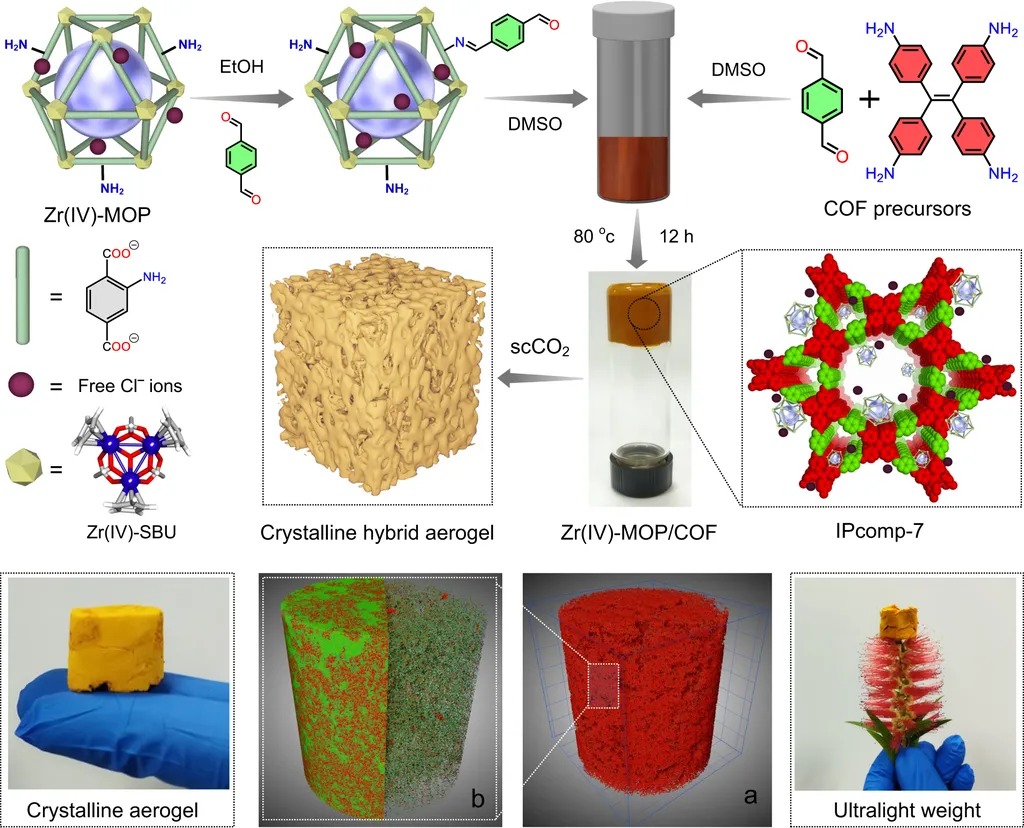In the quest for cleaner energy, nuclear power stands as a formidable low-carbon option, but its widespread adoption hinges on effective management of radioactive emissions. A groundbreaking study published in the journal “Advanced Materials Interfaces” introduces a novel solution that could revolutionize the capture of radioiodine, a significant component of nuclear waste. The research, led by Karamullah Eisawi from the Department of Physics and Engineering Physics at Tulane University, focuses on a nanohybrid material that combines silver and MXene, a two-dimensional material known for its exceptional properties.
The study presents a promising sorbent material, silver-MXene (Ag-Ti3C2Tx), designed to capture iodine gas at high temperatures, specifically at 150°C. This temperature is critical for real-world applications, as it aligns with the conditions often encountered in nuclear waste processing. The research team conducted a thorough characterization of the material using various techniques, including X-ray diffraction, electron microscopies, and gas sorption analyses. Their findings confirm the successful integration of silver nanoparticles onto the MXene substrate and the subsequent formation of silver iodide (AgI) upon iodine capture.
One of the most striking results is the material’s superior performance compared to traditional silver-based sorbents. “Our Ag-Ti3C2Tx nanohybrid achieves an iodine loading of 946 mg per gram, which is significantly higher than the 131 mg per gram observed with silver mordenite zeolite (AgZ),” explains Eisawi. This remarkable improvement opens new avenues for more efficient and cost-effective nuclear waste management.
The implications of this research extend beyond immediate applications. The enhanced efficiency of Ag-Ti3C2Tx could lead to more compact and effective sorbent systems, reducing the overall footprint and cost of nuclear waste processing facilities. Additionally, the material’s thermal stability ensures reliable performance under the demanding conditions of nuclear operations.
As the energy sector continues to grapple with the challenges of decarbonization, innovations like the Ag-Ti3C2Tx nanohybrid offer a glimmer of hope. By addressing key limitations of existing materials, this research paves the way for more sustainable and efficient nuclear energy solutions. The study not only highlights the potential of MXene-based materials but also underscores the importance of interdisciplinary research in tackling global energy challenges.
With the publication of this research in “Advanced Materials Interfaces,” the scientific community now has a new tool in its arsenal to combat radioactive emissions. As Eisawi and his team continue to explore the capabilities of this nanohybrid material, the energy sector can look forward to a future where nuclear power plays an even more significant role in the transition to a low-carbon economy.

